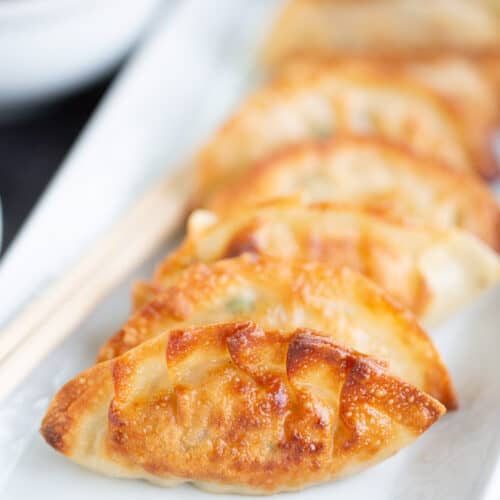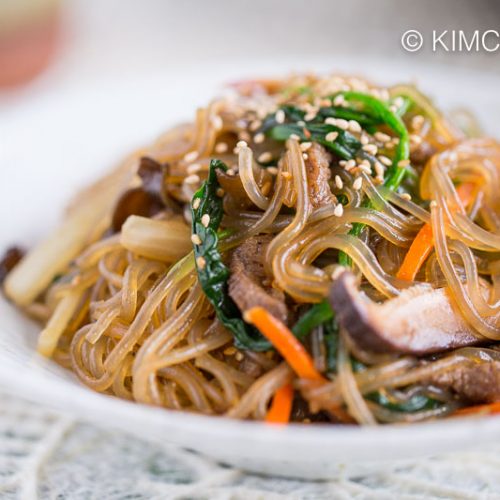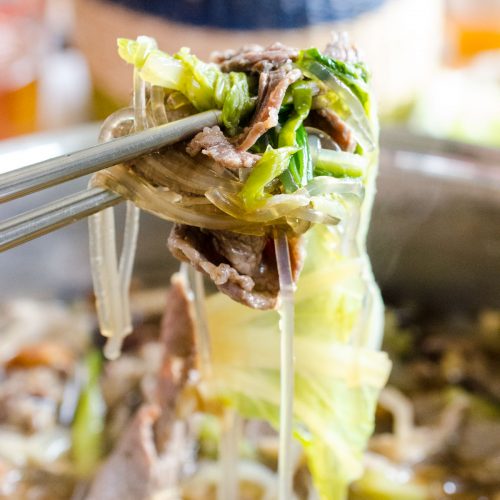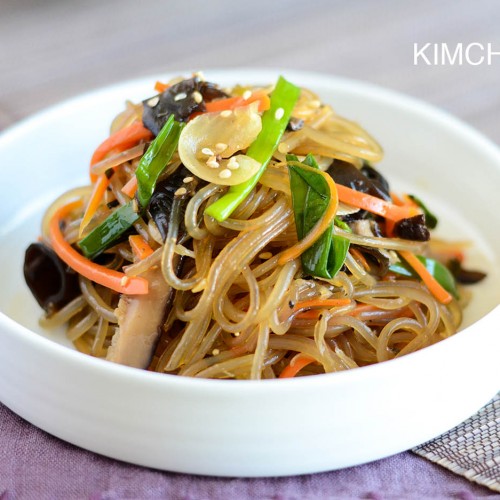What is Dangmyeon (Glass Noodles) ?
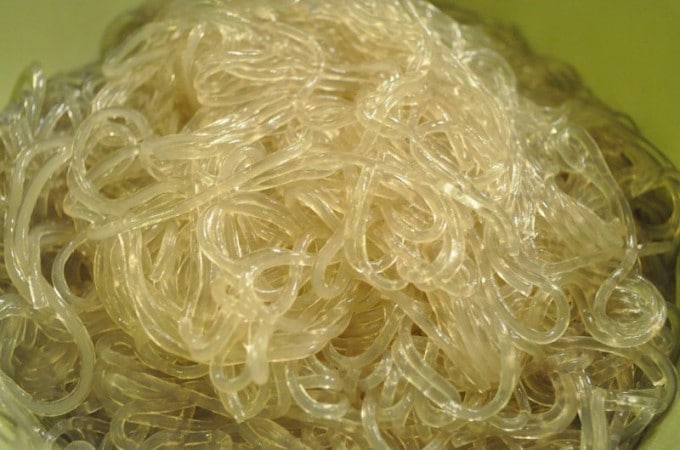
Dangmyeon (당면)/Glass noodles/Korean Vermicelli is a type of noodle that's usually made from purified sweet potato starch and water. They have a greyish color and is opaque when they are uncooked but become translucent when cooked. It also becomes thicker and soft, also chewy and stringy when cooked.
Glass noodles are a very popular and commonly used ingredient in Korean cooking. They are used in soups, stir-fries, fillings for dumplings and as a stand-alone dish called Japchae.
Not To Be Confused With
Rice Vermicelli noodles which are used throughout Asia. These are thinner and not as chewy as Dangmyeon and made from rice not sweet potatoes.
Where and What To Buy
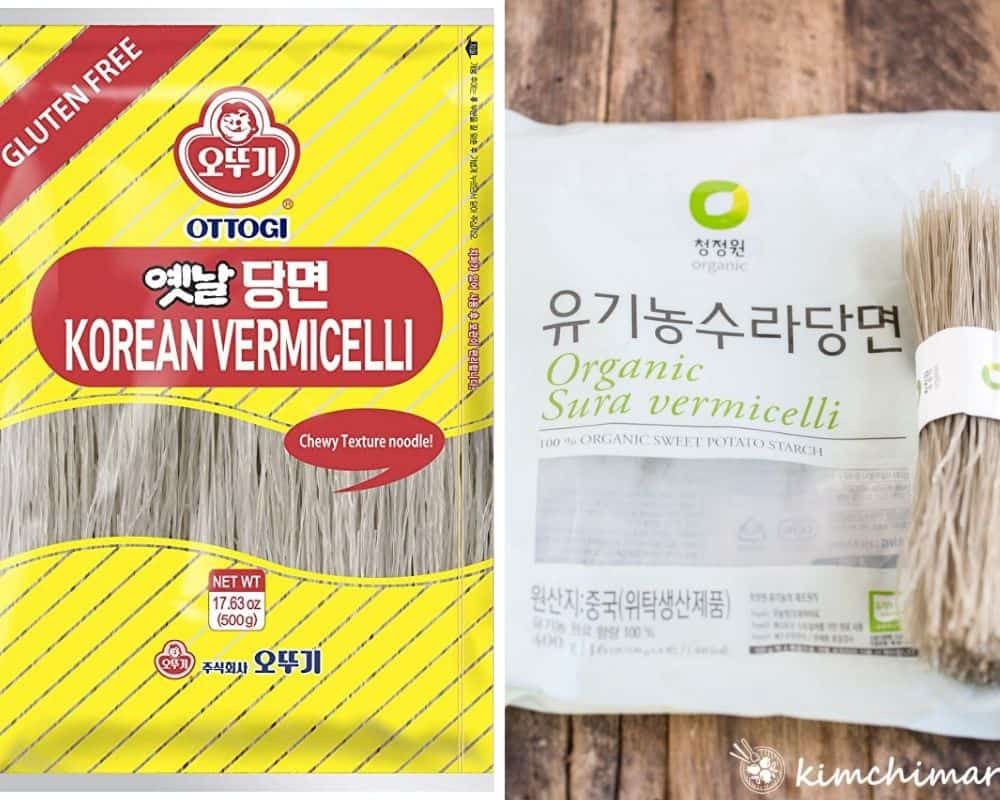
Korean or Asian grocery store, online, Amazon
I don't really find much difference between brands so I have included 2 of the most common brands. The left Ottogi brand is probably the easiest to buy. The right Chungjungone package is also Organic so I buy that often. It's also nice that they come in smaller bundles which makes easier to handle. The big packages like Ottogi, sometimes, the noodles get all tangled and are hard to just get small amount out of the package.
How to Use/Cook
They are often used in Korean soups and stir frys, and occasionally an addition to dumplings.
- To add to soups, stir-frys or as filling for dumplings, you want to cook/boil them in water first, drain and then use it.
- For Japchae too, you want to cook the noodles first and then season them with the vegetables and meat. You can make things simpler by using my One-Pan Japchae recipe where you soak the noodles in water first then just cook them in the frying pan with the vegetables all at once.
How to Clean/Store
Keep sealed and in a cool dry place away from direct sunlight.
Nutrition/Health Info
While glass noodles have the same amount of carbohydrates as other pastas, they do not spike blood sugar as they rate as a low-glycemic carbohydrate. They are not rich in nutrients, but do have trace amounts of iron, selenium and niacin.
